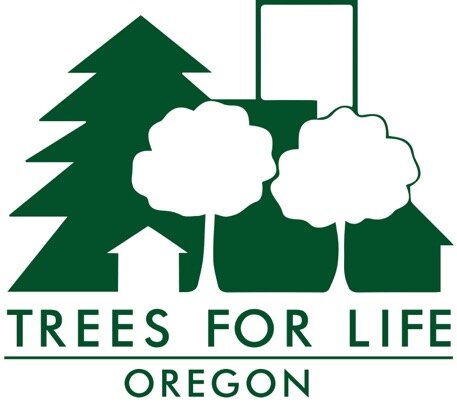Tree Matters by Bruce Nelson
Photo from the Heritage Trees of Portland website.
Portland’s Heritage Tree Committee Leaves a Strong Legacy
This column also appears in the Trees For Life Oregon newsletter.
Portland now has more than 300 still living heritage trees thanks to the dedication of the Portland Heritage Tree Committee, a group of volunteers who worked for years with support from Portland Parks & Recreation/Urban Forestry staff. Since the late 1980s, this committee helped to advocate for saving large, important trees in the city.
Early Champions
Launching a full-fledged Heritage Tree Program didn’t happen overnight. In the early 1970s, city leaders passed an ordinance that created an “historic trees” designation, but almost two decades later only two trees were given this status.
Catlin School educator Jane Glazer joined with Friends of Trees founder Richard Seidman to initiate ways to help save large-form trees at a time when they seemed to be rapidly disappearing. Their efforts with City Commissioners and the Urban Forestry Commission, which was created in 1987, dragged on for several years until they gained traction with City Commissioner Mike Lindberg, Deputy City Attorney Harry Auerbach, City Forester Alex Wynstra, and others to make code changes that, in 1993, established the Heritage Tree Program.
(Independent of Jane Glazer’s work, in the late 1980s Phyllis Reynolds and Elizabeth Dimon began research on a book about the city’s large trees. Trees of Greater Portland, published in 1993, provided descriptions of and walking tours to a number of remarkable trees of size, splendor, and history. Many of the trees in this book later gained heritage tree status.)
Jane Glazer then pulled together a diverse group of people to help identify trees that could potentially become Portland Heritage Trees. The initial group included Phyllis Reynolds, a Portland native who grew up near Hoyt Arboretum; Stan Lindstrom, a Boeing accountant who started trees from seed and was the go-to person for tree identification; Jim Bray, Hoyt Arboretum’s then curator; Kevin Hillery, an arborist; and another arborist, Stephen Peacock. This group followed up on leads about significant city trees, visited them, and discussed if they were worthy of heritage tree status.
The group devoted hours of volunteer time to grow the Heritage Tree Program to 100 trees in 1996 and 200 trees in 1998. Today the program includes well over 300 trees.
During these early years, with minimal funding from Urban Forestry these volunteers developed criteria for determining heritage tree candidates. They presented qualified nominees to the Urban Forestry Commission, which presented its nominations to the City Council. The group also designed and attached heritage tree signs to successful nominees.
Glazer chaired the Portland Heritage Tree Committee through 1999 and routinely reported committee activities to the Urban Forestry Commission. Phyllis Reynolds then led the group for five years; Gregg Everhart did so from 2015 to 2023.
Today Urban Forestry has reorganized the Portland Heritage Tree Program. As more funding became available to Urban Forestry, more dedicated staff time has been allocated to it. Urban Forestry disbanded the committee, which had been meeting mostly on its own, though with staff participation. Urban Forestry’s Samantha Wolf now manages the program and reports on it to the Urban Forestry Commission. See here if you wish to be a program volunteer.
In 1999, at a UFC meeting Jane Glazer reflected on still unresolved issues at the time she stepped down from the committee. These efforts are ongoing today and await resolution—developing sustainable maintenance for all heritage trees including those on private property (today UF maintains heritage trees on public property but not on private property); getting all private-property heritage trees onto house deeds in order to preserve them past current homeowners’ occupancy, though some of this started to occur in 2015; advocating for program budget support from City Council; finding private arborists to assume tree pruning of selected private-site heritage trees.
The Portland Urban Forestry Commission has been fortunate to receive the wisdom of the Heritage Tree Committee for over three decades. One early group member stressed the strong sense of community that developed through the years--creative efforts like holding neighborhood celebrations that included cookies to recognize a new heritage tree on the block. I thank all committee members for their hard work. May the program’s next thirty years be as effective as its first thirty.

